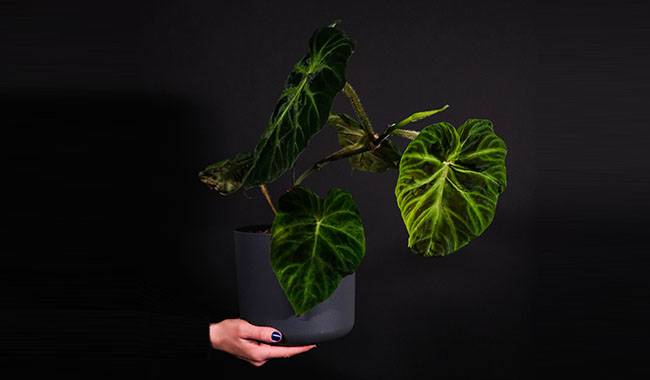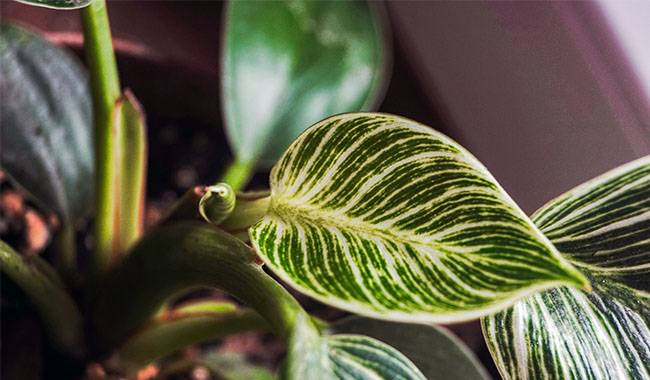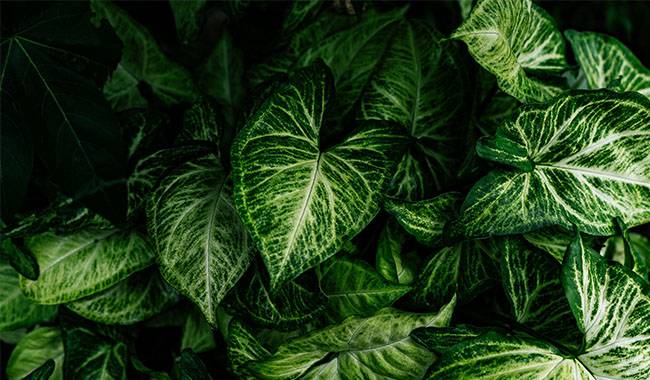
Enchanting with its beauty and variety of heart-shaped leaves and always neat appearance, Philodendron holds a firm place in the ranks of indoor classics. Among evergreen vines, nothing could be more comprehensive. Philodendron requires attention and care – regular care and individual application guidelines for each species to be highly decorative. But surprisingly long-lived and capable of handling any role indoors, Philodendron is some of the most reliable plants you can bring into your collection. You will learn how to grow Philodendron plants in ThumbGarden’s article.
PHILODENDRON PLANT DESCRIPTION
Philodendron has become the most popular evergreen vine for a reason. These Amanitae are evergreen, upright climbing or creeping species with fleshy, gradually hardening smooth shoots and long aerial roots that emphasize delicate branching. Indoor species range in height from 10-100 inches (25-250 cm).
A distinctive feature is the alternating formation of scale-like pseudophylls (cataphyll) on the stem, with a lateral bud in the axil and the usual long petiole. True leaves almost always have a heart-shaped base, but they can be arrow-shaped and oval, narrow and wide, small and large, with a solid margin, or even pinnate. Philodendron is prized for its rich green hues, often complemented by mottled and purple patterns.
Blooms – brightly colored rods with bicolored caps are rare in rooms. Care should be taken when pruning and transplanting in houses with children and animals: the sap from these plants can irritate skin and mucous membranes.
INDOOR PHILODENDRON PLANT SPECIES
There is a considerable selection of different leaf shapes and sizes, colors, and even degrees of capriciousness, which require special attention. When buying, it is best to check the habituation of the plant.
The best species of vines are.
Philodendron erubescens, a large, semi-shade species with cuttings and shoots that glow red and single, heart-shaped oval leaves up to 20 inches (50 cm) long. There are some species with all-purple foliage and watercolor.
Philodendron hederaceum, a formerly free-standing climber Philodendron scandens. – A shade-tolerant, beautiful heart-shaped, compact species with dark green leaves for resting.
Philodendron hastatum, a fast-growing species with arrow-shaped leaves up to 20 inches (50 cm) long and very striking colors.
Philodendron angustisectum, a heat and light loving species with huge pointed leaves up to 30 inches (75 cm) long.
Philodendron domesticum, a beautiful species with dark rounded leaves similar in shape to Philodendron reddish.
Philodendron elegans, a powerful, monster-like species with 20 inches (50 cm) long oblong leaves.
Philodendron pedatum, a fast-growing, unpretentious species with young leaves cut into five lobes that grow to 30 inches (75 cm) long and divide more and more.
Philodendron melanochrysum, a slow-growing, extremely thermophilic plant, has striking copper-colored leaves up to 23 inches (60 cm) long decorated with white stripes.
Philodendron bipinnatifidum, a sun-loving giant with a broad head up to 40 inches (1 m) in diameter and olive-like leaves that can be sculpted even when young.
Philodendron verrucosum, a compact species with very flexible shoots and crinkly heart-shaped leaves with luminous stripes.
Philodendron panduriforme, is an elegant species with very long stems and unusual, guitar-like shaped leaves.
The best upright growing species is Philodendron martianum, a bushy shrub with 20 inches (50 cm) long heart-shaped whole leaves with swollen petioles.
GROWING CONDITIONS FOR INDOOR PHILODENDRON

Philodendron prefers steady heat and does not like to spend summer vacations in the garden or on the balcony. And only in a protected environment will they show their full beauty.
Light and Location
All Philodendrons have only one lighting requirement in common – they do not tolerate direct sunlight. Most species prefer diffused, soft light and a spot on or near a windowsill. Ivy-leaved Philodendrons are very shade tolerant and can even adapt to the depths of a room. Complete and half-light is acceptable for all species.
Philodendron can be used as a decorative piece for furniture and windowsills and as screens, partitions, walls and cascades, complex compositions, and green corners. They do not like to be crowded.
Temperature control and ventilation
Do not let the temperature drop below 59 °F (15°C) even in winter-except for the Philodendron double stem, which likes to overwinter at 53-55 °F (12-13 degrees). The more stable the temperature, the better. Any temperature above 68 °F (20 °C) is fine in summer. Heat can be compensated for by increasing air humidity.
In any jump and change, Philodendron responds with stunted growth and crushed foliage. Plants are better protected from drafts and cold air, air conditioning, and heating.
HOW TO CARE PHILODENDRON AT HOME

Philodendrons can only enjoy the beauty of their leaves if they are cared for. And they place many demands on regular watering and other procedures.
Watering and air humidity
It is best to pay frequent attention to soil moisture and adjust watering to dry out the top 1-2 inch (2.5-5 cm) of soil in the pot. Overwatering is just as dangerous as drought or watering with cold water. It is best to empty the tray of water in one go.
Philodendron does not tolerate very dry air. A sprinkling of water is sufficient in the summer, but the plant needs more stability (any home humidifier will do). On stands, moss or synthetic materials are best kept steadily moist.
Dust should not accumulate on the leaves of Philodendron.
Feeding and Fertilizer Composition
Philodendron is fertilized the day after watering with a standard frequency of once every two weeks – from March to October and once a month (half amount) from October to February. After transplanting, the first fertilizer application should be made 5 to 6 weeks later. Philodendron should only be fertilized with a liquid, balanced compound fertilizer.
Pruning and trimming of Philodendron
The desired shape can be shaped by shortening the shoot to any height, pinching the top of the stem, or simply tying it to a support (moss posts, snakeskin bags, and simple trellises wrapped in moss or synthetics). Under no circumstances should the aerial roots of the plant be touched.
Transplanting, containers, and substrates
Transplant only when necessary, replacing only the top layer of soil each year when the previous pot is fully developed. This procedure is best carried out at the first signs of rapid spring growth (in the third decade of March or early April).
Philodendron is best suited to classic pot shapes with large drainage holes. An ornamental soil mixture is preferred – a loose, coarse, and fertile substrate with a slightly acidic or neutral response. Philodendron can also be grown in hydroponics.
Place a coarse drainage layer 2 inches (5 cm) or more high in the bottom of the container. It is very important to keep the submerged level of the plants constant.
Pests, Diseases, and Problems in Cultivation
Any problems with conditions and care will show up immediately on the leaves of the plants. Inadequate fertilization will cause them to stretch, lighten, wilt, yellow, and almost stop growing, while over-fertilization will cause them to brown, wilt, and deform. Overwatering, flooding, draught, cold and heat, and too much sun will cause the plants to darken, yellow, and dry out at the top, discoloring and wilting.
Severe infestations of insects (aphids or spider mites), rot, or sooty fungi can develop black spots on the leaves. Insecticides and acaricides should be used immediately to combat these problems.
Cuttings of Philodendron
Both apical cuttings and stem cuttings can be rooted, i.e., long segments of shoots with 2-3 leaves, for stem cuttings – with lateral branches. Philodendron needs a peat substrate, a stable heat of about 70 °F (21°C), and high humidity under the cover.
Aerial rooting is done on strong shoots by wrapping a gap under the lateral branches with moss or soil and keeping the humidity stable until the roots are released.







